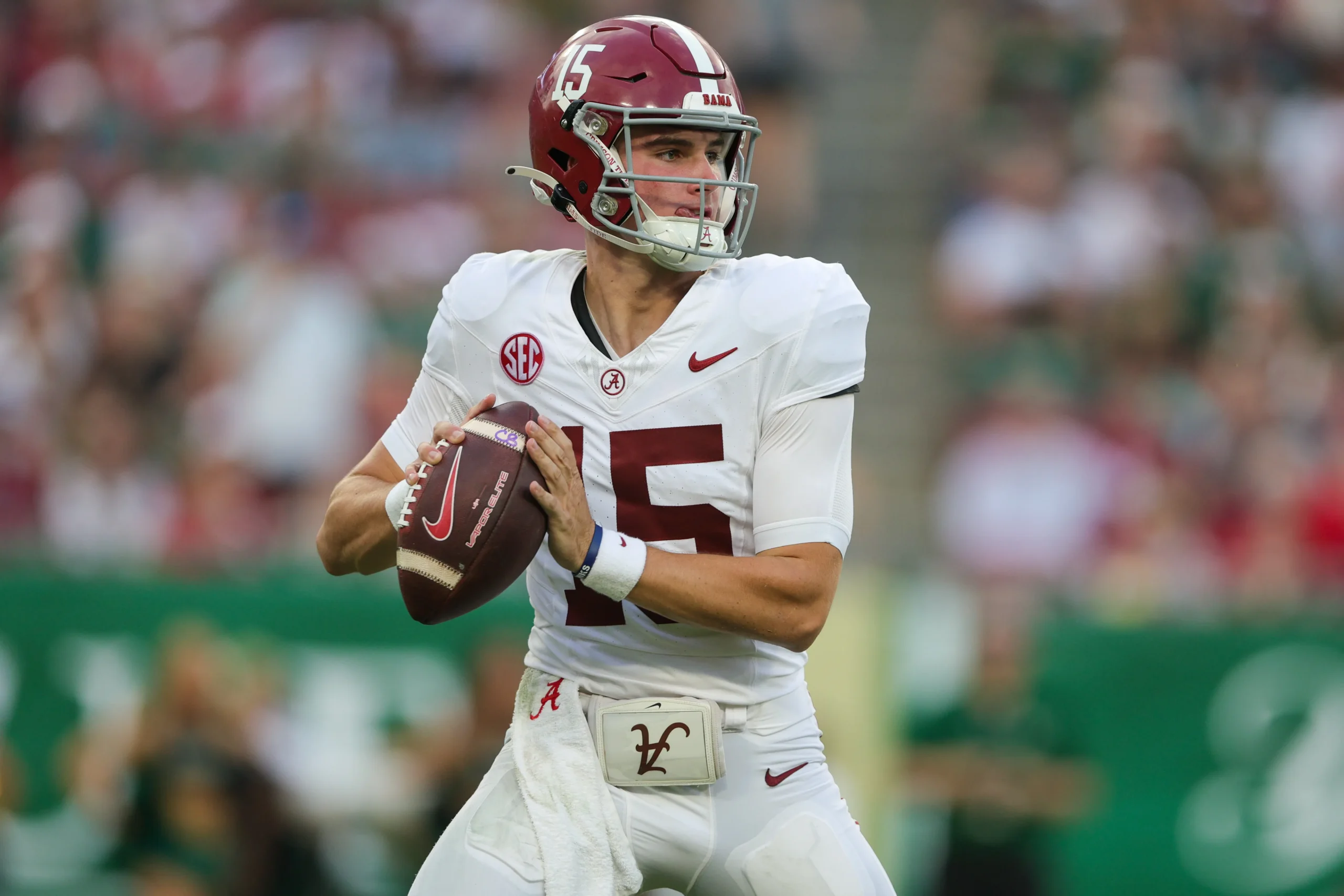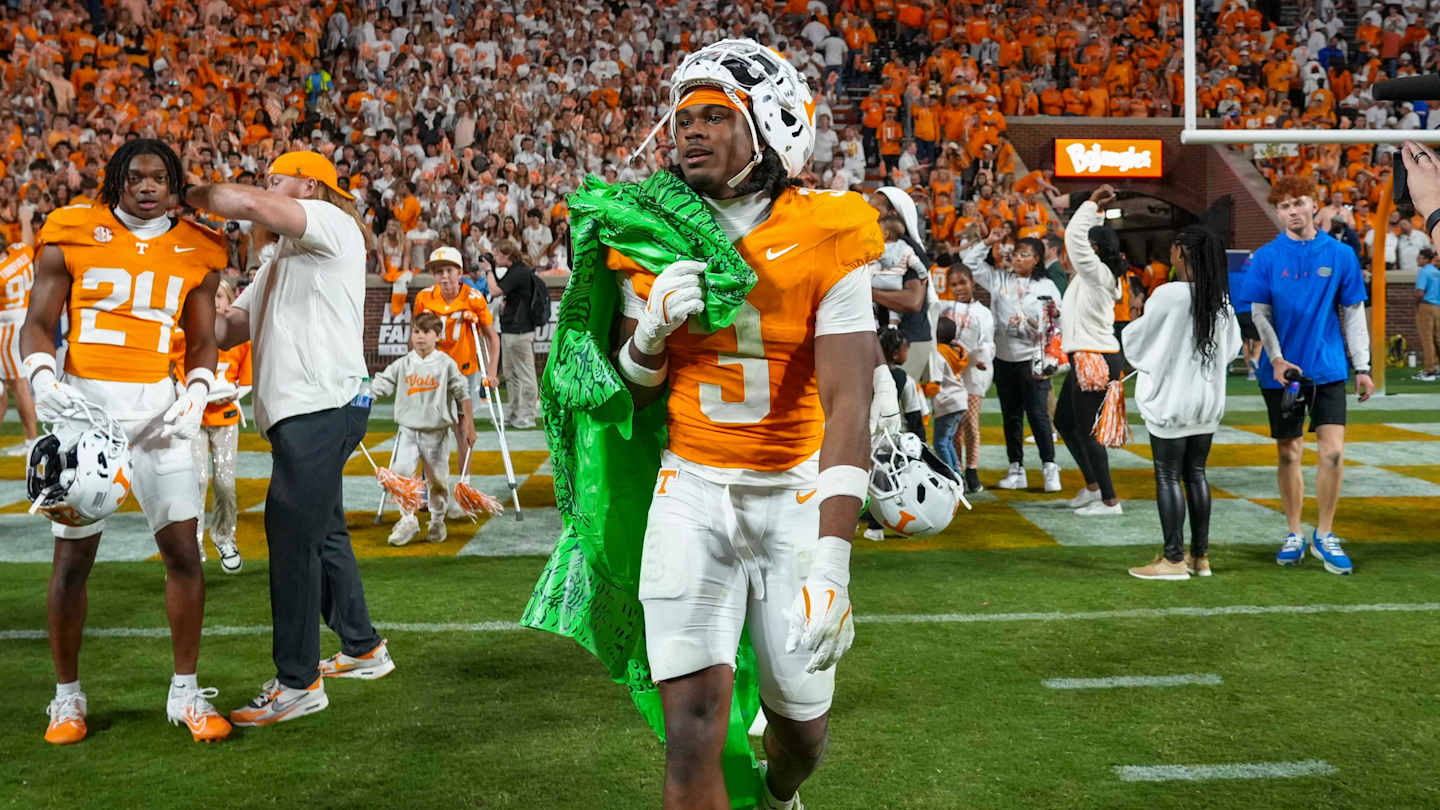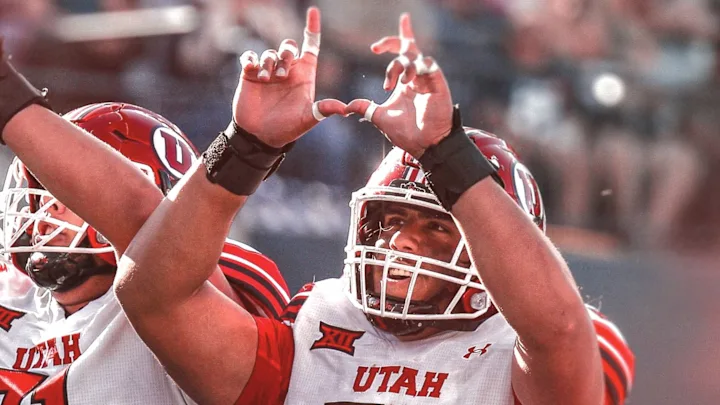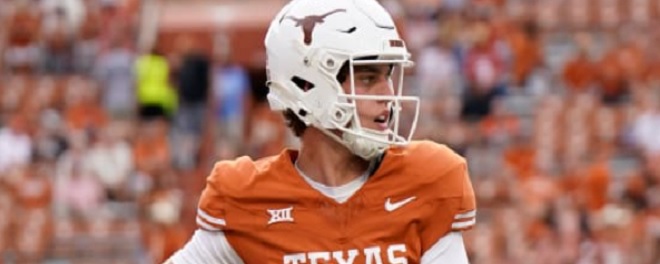By Charlie Campbell.
Send Charlie an e-mail here: [email protected]
Follow Charlie on Twitter @draftcampbell for updates.
This page was last updated April 8, 2021. Follow me @walterfootball for updates.
Position Review: Interior Offensive Linemen
Interior OL Class
Early-round talent: B+
Mid-round: C+
Late-round: C+
Overall grade: B
2021 prospects vs. 2020
Alijah Vera-Tucker
Rashawn Slater
Cesar Ruiz
Trey Smith
Wyatt Davis
Robert Hunt
Landon Dickerson
Damien Lewis
Jonah Jackson
Aaron Banks
Creed Humphrey
Matt Hennessy
Lloyd Cushenberry
Trey Hill
Tyre Phillips
John Simpson
The interior offensive line class for the 2020 NFL Draft was poor overall. Only two was selected over the first two rounds last year. The talent level is much better for the 2021 NFL Draft, with likely four or five interior offensive linemen likely to get selected during the first two rounds.
If you were to merge the two classes together, Alijah Vera-Tucker and Rashawn Slater would definitely be the top linemen and ahead of 2020 first-rounder Cesar Ruiz. Trey Smith and Wyatt Davis are better prospects than Robert Hunt. Hunt and Landon Dickerson are about equal as late second-rounders because of Dickerson’s history with injuries. Aaron Banks and Creed Humphrey are third-round picks who are better than Matt Hennessy and Lloyd Cushenberry but not as good of prospects as Damien Lewis and Jonah Jackson. Trey Hill would be on a par with Cushenberry and Tyre Phillips.
Safest Pick: Alijah Vera-Tucker, USC

Previous Picks:
2020: Tristan Wirfs, Cesar Ruiz
2019: Cody Ford, Eric McCoy
2018: Quinton Nelson, Billy Price
2017: Forrest Lamp
2016: Sebastian Tretola, Nick Martin
2015: Brandon Scherff, Cam Erving
2014: Xavier Sua’Filo, Weston Richburg
2013: Chance Warmack, Barrett Jones
Vera-Tucker looks like a safe pick to turn into a quality NFL starter. He could play left tackle or guard in the NFL, as he has a good season of tape at each position over the past two years. The 6-foot-4, 315-pounder is an effective run blocker while showing the athleticism to handle speed rushers and the strength to take on power tackles. I chose Vera-Tucker over Rashawn Slater (6-3, 305) because Vera-Tucker is bigger and didn’t skip the 2020 season, while Slater opted out of 202, which slowed his development. In the first round of the 2021 NFL Draft, Vera-Tucker could be one of the safest prospects at any position.
Biggest Bust Potential: Trey Hill, Georgia

Previous Picks:
2020: Damien Lewis, Jake Hanson
2019: Ross Pierschbacher
2018: Scott Quessenberry
2017: Pat Elflein
2016: Cody Whitehair, Jack Allen
2015: Jeremiah Poutasi, Hroniss Grasu
2014: Chris Watt, Marcus Martin
2013: Brian Winters, Travis Fredrick
This was a tough choice, but Hill stands out as a prospect with some risk. He was very good in 2019 and looked like a future early-rounder, but in 2020, Hill’s technique went down the toilet. A lot of that decline stemmed from Hill getting overweight. If Hill can’t improve his work ethic, weight management, and technique, he could be a bust.
Interior Offensive Lineman Rankings by Attributes
Pass Protection:
NFL prototype: Quenton Nelson, Colts
- Alijah Vera-Tucker
- Rashawn Slater
- Trey Smith
- Landon Dickerson
- Creed Humphrey
- Aaron Banks
- Wyatt Davis
- Trey Hill
Recap: The NFL is a passing-driven league, so keeping a clean pocket as a pass-blocker is the attribute that the majority of teams consider first. Coaches want the guards to keep defensive tackles from gaining penetration or causing disruption. If the guards are successful, quarterbacks can step up in the pocket to avoid edge rushers. This helps out the offensive tackles significantly. Additionally, good guard/center play provides better throwing lanes for the quarterback.
For the NFL, there is a lot to like about Vera-Tucker (6-4, 315) in pass protection. He is an easy mover with athleticism, quickness and agility. Vera-Tucker can easily glide with speed rushers, showing the ability to play the typewriter with his feet. Vera-Tucker is a natural knee bender who maintains good leverage while avoiding bending at the waist. When taking on bull rushes, Vera-Tucker is able to anchor and absorb the rush to keep them from pushing him into the quarterback.
Slater (6-3, 305) shows good hand placement in pass blocking and is able to sustain his blocks due to possessing functional strength to tie up defenders. With his quick feet and agility, Slater is able to stay square on speed rushers and neutralize them running around the edge. Slater’s athleticism helps him be a natural knee bender who does not have to reach after edge rushers because his feet and bending get him in proper position. Slater can have problems with length and strength on the edge, as long defenders are able to keep him at a distance, which allow them to have the space to run free. Hence, some team evaluators feel Slater should be a guard or center in the NFL.
In pass protection, Smith is tough for defenders to get by because his size and length are difficult to bypass. His strength and weight allows him to anchor bull rushes and stop them cold. On the inside of the line, speed rushers struggle to get past him, as his length keeps them from collapsing the pocket and he has strong hands to sustain his block. Smith does not have the feet or agility to play left tackle in the NFL, but if there were injuries, he could be an emergency tackle given his experience blocking on the edge at Tennessee.
Humphrey shows the ability to anchor in pass protection, and he can hold his ground against bull rushes from heavy defensive tackles. He won’t be a liability taking on 3-4 defenses with a good zero-technique nose tackle who aims to collapse the pocket. Humphrey can sink his hips and is strong to hold his ground. Executing double teams with his guards is not an issue either, and Humphrey should be a helpful blocker to execute double teams on problematic interior linemen.
Banks was a solid and reliable pass protector at Notre Dame. He has strong hands that rock defenders and often knock them off balance to slow them down. Those strong hands also help him to sustain blocks and prevent second efforts from being effective. With his size and strength, Banks can stop bull rushes. He’s ranked behind those ahead because speed rushes can give him issues, which is something he will have to improve on for the NFL.
In pass protection, Davis has the potential to be solid blocker, but he will need additional development. He can react late to speed rushes, stunts, and games up front. Davis can get in trouble when his weight gets over his toes as well, and that gives him issues with speed rushers. He has the weight and strength to anchor and hold his ground against bull rushes. However, improving his ability to handle speed rushers and games run by defenses are the biggest areas of improvement for Davis entering the NFL.
As a sophomore, Hill was a center who could handle defensive tackles one-on-one in pass protection. His technique went down the tubes though in 2020, and he had problems with speed as well as bad results when his weight got over his toes. He needs to drop weight and big improvements in his technique.
Hill has a thick lower body with a strong build that allows him to stifle bull rushes. While Hill can give up some ground, he gives his quarterback the necessary time to get the ball out. Hill is not an elite athlete or exceptionally fast for a center, but he was able to adjust to speed rushes and push them around the pocket.
Run Blocking:
NFL prototype: Quenton Nelson, Colts
- Rashawn Slater
- Alijah Vera-Tucker
- Wyatt Davis
- Trey Smith
- Aaron Banks
- Landon Dickerson
- Trey Hill
- Creed Humphrey
Recap: The interior of the offensive line is the engine of a good running game. The linemen there are the most important blockers for opening holes up the middle in addition to pulling or moving on stretch runs. Dominant guards and centers who can open up holes even when defenses know the run is coming provide a mental edge, especially late in games. The 2021 NFL Draft has a pretty good class of run blockers.
Slater makes an impact in the ground game when he fires to the second level. He dynamically gets at linebackers off the snap or peel off defensive linemen before hitting a linebacker to help open a hole. With his speed, athleticism, and ability to play in space, Slater is a great fit for a zone-blocking scheme. He is limited by his strength and is not a true bull who can overpower defenders at the line of scrimmage. He fights, but he is not a people mover who can drive defenders backward off the ball.
In the ground game, Vera-Tucker is not a bull at the point of attack, but he is still effective. He is more of a wall-off-and-position blocker who beats defenders to a spot to cover them up and keep them from making a tackle. Vera-Tucker does a nice job of scrapping and keeping his hands fighting to sustain his blocks. It would help him to add strength if his frame isn’t maxed out. As pro, Vera-Tucker might fit best in a zone-blocking scheme.
Davis is a tough blocker in the ground game and has the ability to bull defenders and create movement at the point of attack. He fires off the ball and has the power to rock defenders backward and push them out of their gaps. Davis plays with an attitude and blocks through the whistle, looking to punish defenders. He also has heavy hands and does a good job of sustaining blocks to prevent second efforts. In short-yardage and goal-line situations, Davis is a real asset to push defenders, turn them, and manipulate them thanks to his strong upper body. Sometimes, he oversets and lunges, especially at the second level, leading him to lose his feet. That tendency is why Davis is behind Slater and Vera-Tucker. Overall though, Davis should be an asset on the ground in the NFL.
In the ground game, Smith is a load at the point of attack who has strong hands and the power to be a drive blocker. He has heavy hands that can shock defenders back and drive them out of their gaps. His length and ability to sustain blocks make him tough to shed, as he turns and manipulates defenders regularly. Smith is a powerful run blocker who should be an excellent fit in a man-blocking scheme.
Banks was a productive run blocker for Notre Dame, which found success running behind him. He is powerful at the point of attack, using his strong hands to rock back defenders. With his thick build and upper body, Banks can drive block and create a push. He does have some issues with bending at the waist at times, and that can limit his push in the ground game. Along with that issue, Banks is behind the players above because he lumbers in space and is not a guard who is going to move around the field well.
As a run blocker, Dickerson’s fabulous technique leads him to being effective even though he lacks heavy hands and is not a bull dozer who can overpower defenders. While Dickerson struggles to knock defenders off the ball; he beats them to spots instead and ties them up with excellent hand placement and by using his large frame to seal off running lanes. Dickerson can get out in space and is adept at getting to his defender on the second level.
Hill was strong at the point of attack as a sophomore in the ground game and was effective at pushing tackles out of their gaps when he hit a double team with a guard. However as a junior, Hill was too heavy and was prone to overextending when his weight got over his toes, and that led to missed blocks. There is no guarantee Hill’s poor technique and weight issues will be fixed at the pro level.
As a run blocker, Humphrey is strong at the point of attack. He can control and manipulate defenders while showing good technique to hit combo blocks or get to the second level. Humphrey will not be overwhelming as an interior run blocker in the NFL.
Zone Blocking:
NFL prototype: Josh Sitton, Retired
- Alijah Vera-Tucker
- Rashawn Slater
- Landon Dickerson
- Trey Smith
- Creed Humphrey
- Wyatt Davis
- Aaron Banks
- Trey Hill
Recap: The zone-blocking system is run by a number of NFL teams, and the success of the scheme has many power-man teams adding some zone plays into the playbook. The zone scheme calls for guards and centers to have the ability to move well laterally and downfield to help set up moving wall with cut-back lanes. Interior linemen need athleticism and quickness in order to be effective.
Vera-Tucker has good speed, athleticism and agility for a big body. He would be a great fit in a zone-blocking scheme because his physical talents help get him in position and his size is hard to get around. Slater is a smooth mover who has good speed. He has decent explosivness, firing out of his stance quickly and bursting to the second level. He would be a good fit in a zone scheme.
Dickerson, Smith and Humphrey would be fine fits for zone-blocking schemes. None of them is a dominant athlete or exceptionally fast, but they all have enough quickness and agility to execute zone plays.
Davis, Banks and Hill are more natural fits in a power-man scheme. They have some ability to execute some in a zone scheme, as they all ran some zone plays in college, but all three would probably be better fits in man.
Power Man:
NFL prototype: Quenton Nelson, Colts
- Trey Smith
- Wyatt Davis
- Alijah Vera-Tucker
- Rashawn Slater
- Aaron Banks
- Trey Hill
- Landon Dickerson
- Creed Humphrey
Recap: A lot of teams in the NFL run a power man-blocking scheme. Interior linemen for this scheme need the ability to defeat their defender to blast open or seal a running lane. Guards need to have the power to move defenders and sustain blocks, while centers need to be able to contribute in some one-on-ones and execute well on double teams with their guards.
Smith is a load at the point of attack who has strong hands and the power to drive block. He has the heavy hands to shock defenders back and force them out of their gaps. His length and ability to sustain blocks make him tough to shed, so he turns and manipulates defenders regularly. Smith is a power run blocker who should be an excellent fit in a man-blocking scheme.
Davis is a tough blocker who has the ability to bull defenders and create movement at the point of attack. With his strength and power to drive block, he is an excellent fit for a man-blocking scheme. Banks and Hill are also better fits for power-man schemes than zone schemes. They have thick, wide, strong frames that fit man blocking well.
Dickerson and Humphrey could execute in pro power-man schemes. Humphrey may not have the power to drive block, but in tandem with a guard, he could be functional.
Versatility:
NFL prototype: Kelechi Osemele, Free Agent
- Rashawn Slater
- Alijah Vera-Tucker
- Trey Smith
- Landon Dickerson
- Trey Hill
- Creed Humphrey
- Wyatt Davis
- Aaron Banks
Recap: A lot of NFL offensive line coaches want to cross-train their interior linemen for another position, especially among the backup offensive linemen. It helps teams in making the decision on who to keep active on game days. Linemen who can play more than one position are highly valued. Coaches like guards who can play center or tackle if there is an injury in the middle of a game.
Slater has the skill set to play tackle, guard or center. Some think moving to the inside would be the best plan for him to be the most effective in the NFL. Vera-Tucker and Smith were both starting guards and left tackles in college. The difference between the two is Vera-Tucker could stay at tackle in the NFL while Smith should only play there in an emergency. Smith’s emergency availability is something that the remaining guards don’t have, so he’s rated third.
Humphrey is a center only. Team sources say he could play guard in an emergency, but as a starter, he only fits at center. Dickerson or Hill could play guard or center in the NFL. Davis and Banks are guards only and not fits to play center or tackle.
Pulling:
NFL prototype: Zack Martin, Cowboys
- Rashawn Slater
- Alijah Vera-Tucker
- Landon Dickerson
- Creed Humphrey
- Trey Smith
- Wyatt Davis
- Aaron Banks
- Trey Hill
Recap: Pulling is necessary for a man-blocking system to work. Zone teams, however, are becoming more diverse and are mixing in more power-man plays that have guards pulling. The quick and athletic interior linemen of zone schemes do better pulling than isolating and charging straight ahead. Thus, a zone team will like to see a prospect’s ability to pull as well.
Slater could be dynamite as a pulling guard in the NFL. He is so agile, quick and balanced in his approach. He can dish out perfect blocks in space to open holes.
Vera-Tucker has the good feet, speed and athleticism to be an effective puller at the next level. With his quickness and feet, he should be very good to move through trash and hit blocks in space.
Dickerson and Humphrey are smart technicians,which makes them effective at pulling. They are both quick and athletic enough to get out in space to hit a block at the second level.
Smith, Davis and Banks can pull somewhat, but none of them is an exceptional athlete. Hill was able to do some pulling for Georgia in 2019, but he did not look good in that regard in 2020.
NFL Picks - Dec. 21
NFL Power Rankings - Dec. 17
2026 NFL Mock Draft - Dec. 17
Fantasy Football Rankings - Sept. 1




